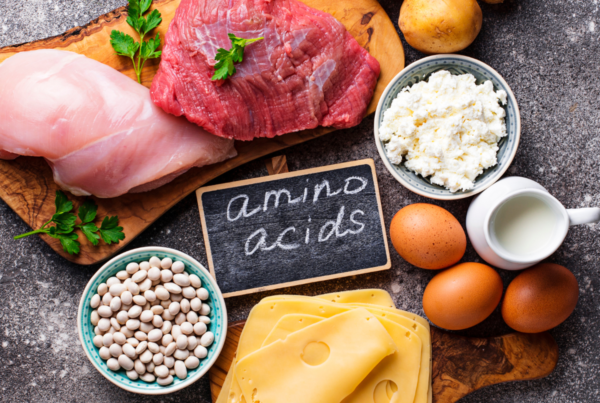If you live with Type 2 diabetes, you will feel better and experience a greater quality of life if you focus and spend some time on your food and nutrition plan. A little strategy, intention, and meal planning goes a long way. But where do you start?
When it comes to managing Type 2 diabetes, people don’t have the time or knowledge to put together meals that are not only nutritious and beneficial for their unique physical needs, let alone create menus that are exciting and taste good!
A formatted diet, such as Atkin’s, Mediterranean, vegan, or other diets may help save you time and brain power when it comes to shopping, preparing meals and feeding yourself and/or your family members who have been diagnosed with Type 2 diabetes. But with each diet, there are some considerations.
Which foods affect your blood sugar levels?
Carbohydrates in food give your body energy. You need to eat carbohydrates to maintain your energy. However, carbohydrates, which are found in grains, bread, pasta, milk, sweets, fruit, and starchy vegetables, are broken down into glucose in the blood faster than other types of food. This will raise your blood sugar levels. Protein and fats do not directly impact blood sugar, but both should be consumed in moderate amounts.
As a person with Type 2 diabetes, your goal is to keep your glucose (blood sugar) level in your target range. If you don’t know yet what that target range is, please consult your health care provider.
A healthy glucose-management meal plan includes:
-
Food from all the food groups
-
Daily intakes of fewer calories
-
A balanced amount of carbohydrates at each meal and snack to keep levels from spiking
-
Healthy fats such as Omega 3s
Along with healthy eating, you can help keep your blood sugar in target range by maintaining a healthy weight. Persons with type 2 diabetes are often overweight. Losing just 10 pounds (4.5 kilograms) can help you manage your diabetes better. Eating healthy foods and staying active (for example, 30 to 60 minutes of walking per day) can help you meet and maintain your weight loss goal.
Each person is different, so please consult your doctor, registered dietitian, nutritional counselor or diabetes educator to create a meal plan that may be based on a popular diet but works for your specific needs.
Fill Up Your Plate The Right Way
A good way to make sure you get all the nutrients you need during meals is to use the plate method. This is a visual food guide that helps you choose the best types and right amounts of food to eat. It encourages larger portions of non-starchy vegetables (half the plate) and moderate portions of protein (one quarter of the plate) and starch (one quarter of the plate).
Variety Is The Spice of Life
Eating a wide variety of foods helps you stay healthy. Try to include foods from all the food groups at each meal.
VEGETABLES (2½ to 3 cups or 450 to 550 grams a day)
Choose fresh or frozen vegetables without added sauces, fats, or salt. Non-starchy vegetables include dark green and deep yellow vegetables, such as cucumber, spinach, broccoli, romaine lettuce, cabbage, chard, and bell peppers. Starchy vegetables include corn, green peas, lima beans, carrots, yams and taro. Note that potato should be considered a pure starch, like white bread or white rice, instead of a vegetable.
FRUITS (1½ to 2 cups or 240 to 320 grams a day)
Choose fresh, frozen, canned (without added sugar or syrup), or unsweetened dried fruits. Try apples, bananas, berries, cherries, fruit cocktail, grapes, melon, oranges, peaches, pears, papaya, pineapple, and raisins. Drink juices that are 100% fruit with no added sweeteners or syrups.
GRAINS (3 to 4 ounces or 85 to 115 grams a day)
There are 2 types of grains:
-
Whole grains are unprocessed and have the entire grain kernel. Examples are whole-wheat flour, oatmeal, whole cornmeal, amaranth, barley, brown and wild rice, buckwheat, and quinoa.
-
Refined grains have been processed (milled) to remove the bran and germ. Examples are white flour, de-germed cornmeal, white bread, and white rice.
Grains have starch, a type of carbohydrate. Carbohydrates raise your blood sugar level. For healthy eating, make sure half of the grains you eat each day are whole grains. Whole grains have lots of fiber. Fiber in the diet keeps your blood sugar level from rising too fast.
PROTEIN FOODS (5 to 6½ ounces or 140 to 184 grams a day)
Protein foods include meat, poultry, seafood, eggs, beans and peas, nuts, seeds, and processed soy foods. Eat fish and poultry more often. Remove the skin from chicken and turkey. Select lean cuts of beef, veal, pork, or wild game. Trim all visible fat from meat. Bake, roast, broil, grill, or boil instead of frying. When frying proteins, use healthy oils such as olive oil.
DAIRY (3 cups or 245 grams a day)
Choose low-fat dairy products. Be aware that milk, yogurt, and other dairy foods have natural sugar, even when they do not contain added sugar. Take this into account when planning meals to stay in your blood sugar target range. Some non-fat dairy products have a lot of added sugar. Be sure to read the label.
OILS/FATS (no more than 7 teaspoons or 35 milliliters a day)
Oils are not considered a food group. But they have nutrients that help your body stay healthy. Oils are different from fats in that oils remain liquid at room temperature. Fats remain solid at room temperature.
Limit your intake of fatty foods, especially those high in saturated fat, such as hamburgers, deep-fried foods, bacon, and butter.
Instead, choose foods that are high in polyunsaturated or monounsaturated fats. These include fish, nuts, and vegetable oils.
Oils can raise your blood sugar, but not as fast as starch. Oils are also high in calories. Try to use no more than the recommended daily limit of 7 teaspoons (35 milliliters).
WHAT ABOUT ALCOHOL AND SWEETS?
If you choose to drink alcohol, limit the amount and have it with a meal. Check with your health care provider about how alcohol will affect your blood sugar and to determine a safe amount for you.
Sweets are high in fat and sugar. Keep portion sizes small.
Here are tips to help avoid eating too many sweets:
-
Ask for extra spoons and forks and split your dessert with others.
-
Eat sweets that are sugar-free.
-
Always ask for the smallest serving size or children’s size.




